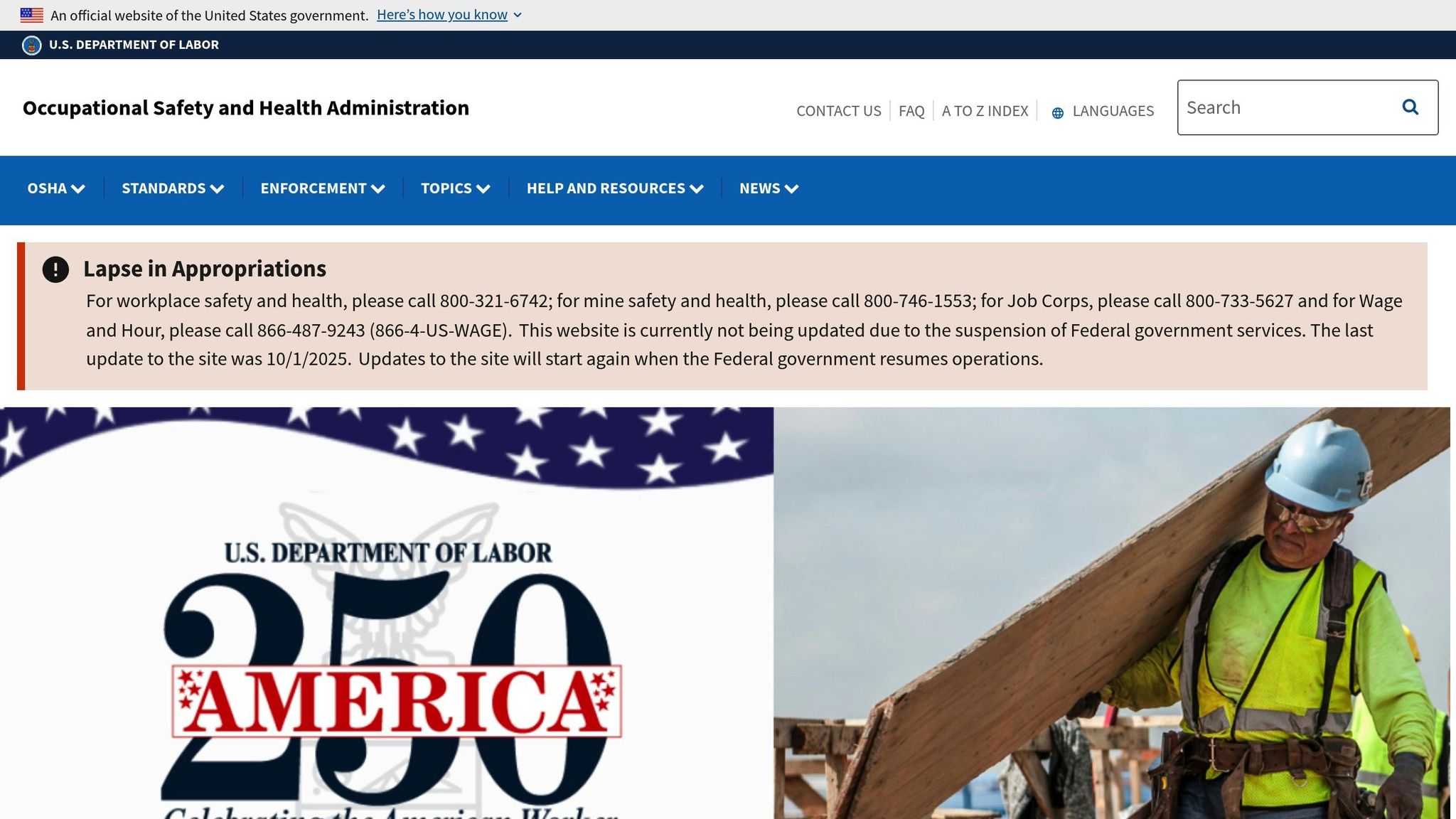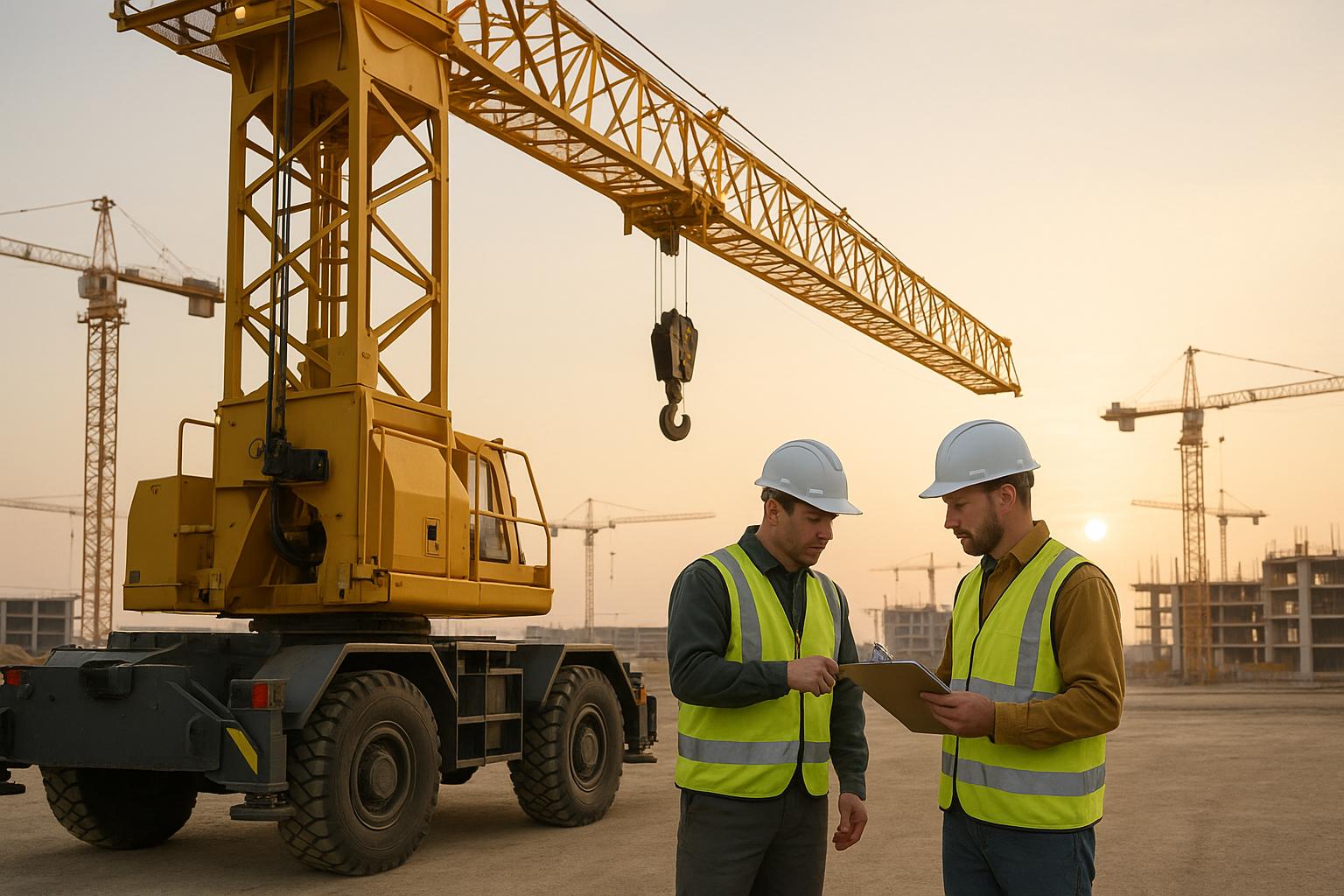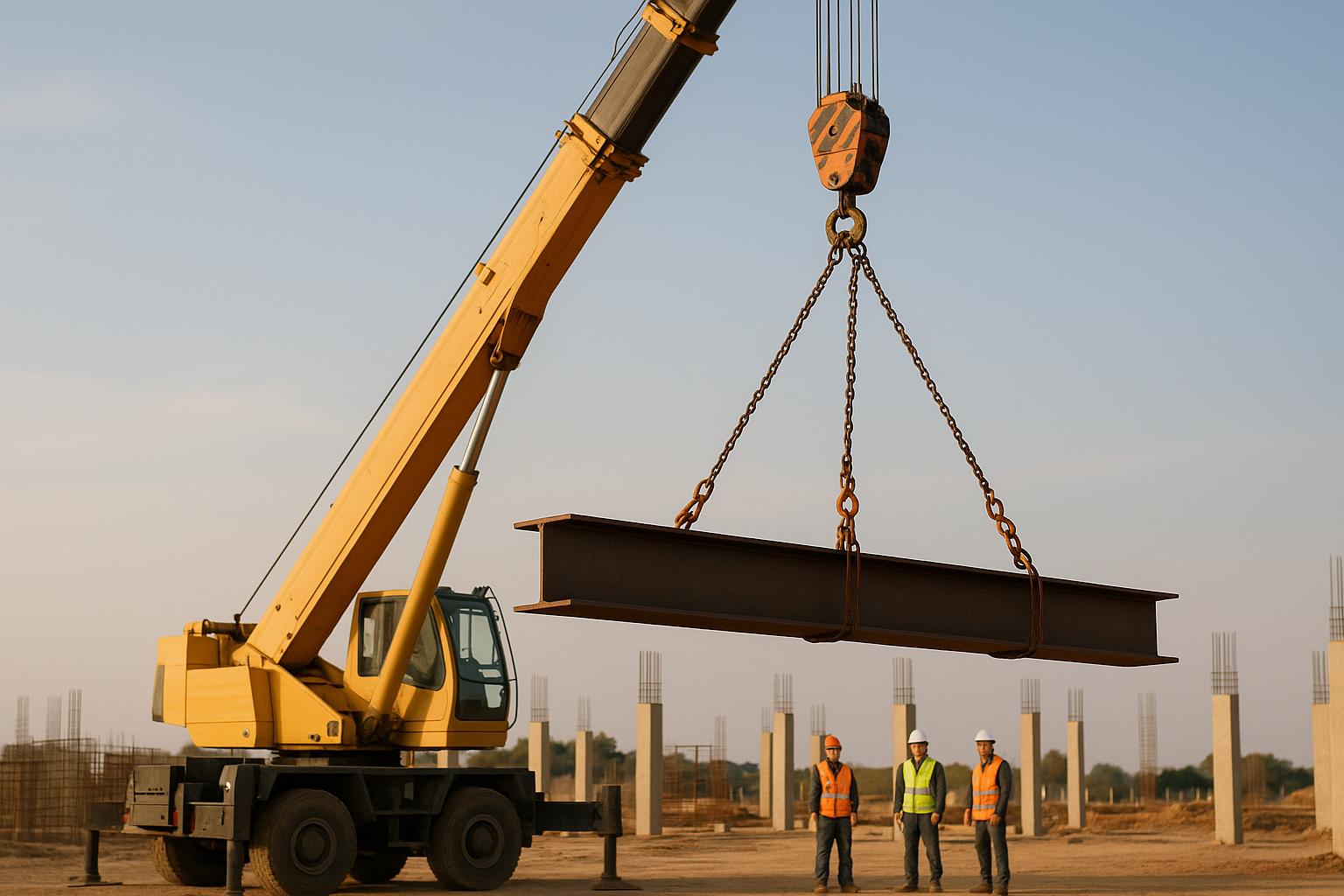Ultimate Guide to Commercial Welding Services

Commercial welding services are vital for construction and industrial projects, handling tasks like fabrication, repairs, and maintenance. Whether you're working on steel structures, pipelines, or heavy machinery, choosing the right welding method and service provider is critical for quality and efficiency. Here's a quick breakdown:
- MIG Welding: Ideal for fast, high-volume work on materials like steel and aluminum. Best for structural frameworks and equipment repairs.
- TIG Welding: Focuses on precision and clean finishes, perfect for thin metals, custom architectural designs, and high-pressure piping.
- Arc Welding: Suited for heavy-duty applications like bridges and thick steel sections. Works well in tough environments.
When hiring a provider, evaluate certifications, safety records, and their ability to meet project needs. Cost-saving strategies like bulk material purchases, pre-fabrication, and integrated services can also improve outcomes while keeping expenses in check. Safety and regular equipment maintenance are non-negotiable for success.
4 Types of Welding Explained: MIG vs TIG vs Stick vs Flux Core
Core Welding Techniques and Their Applications
Welding techniques like MIG, TIG, and arc welding are the backbone of commercial fabrication and repair. Each method offers specific benefits in terms of speed, precision, material compatibility, and cost, making them essential for different project needs. The choice of technique often dictates the project's timeline, budget, and overall quality.
MIG Welding: Strengths and Applications
MIG welding, known for its speed and efficiency, uses a continuously fed wire and shielding gas to create strong, clean welds. This process is particularly suited for high-volume production, where maintaining consistent quality and meeting tight deadlines are critical. The welding gun feeds a solid wire electrode while releasing an inert gas - usually argon or a mix of argon and carbon dioxide - to shield the weld pool from contamination. This setup ensures strong, durable joints and minimizes post-weld cleaning.
One of MIG welding's most common applications is structural steel fabrication, where it handles materials like mild steel, stainless steel, and aluminum with ease. It's widely used for constructing building frameworks, equipment supports, and architectural metalwork. Additionally, its versatility makes it a go-to choice for repairing industrial equipment such as conveyor systems and heavy machinery, all while keeping downtime to a minimum. Because the process generates relatively low heat, it reduces the risk of warping thin or heat-sensitive materials.
With travel speeds ranging from 12 to 20 inches per minute, MIG welding offers significant labor cost savings for large-scale projects requiring extensive welding. While MIG is all about speed and efficiency, TIG welding stands out for its precision and attention to detail.
TIG Welding: Precision and Use Cases
TIG welding is all about precision. Using a non-consumable tungsten electrode and a separate filler rod, this method allows for meticulous control over heat and material deposition. The result? Spatter-free welds with superior penetration, making it the go-to choice for applications where weld quality and appearance are paramount. Industries like pharmaceuticals, food processing, and pressure vessel manufacturing often rely on TIG welding for its ability to produce X-ray quality welds.
In custom architectural metalwork, TIG welding shines by creating smooth, uniform weld beads on features like handrails, decorative panels, and exposed structural elements. Its precision also prevents distortion in thin-gauge materials, which is essential for aesthetic projects. Industrial piping systems that handle high-pressure or corrosive fluids also benefit from TIG welding's ability to create full-penetration root passes, ensuring system integrity.
TIG welding excels with specialized materials such as duplex stainless steels, Inconel, and titanium alloys, all of which require careful heat control to maintain their properties. Operating at slower speeds - 3 to 8 inches per minute - TIG welding prioritizes quality over speed, making it ideal for applications where long-term performance is critical. For heavy-duty durability, however, arc welding takes the lead.
Arc Welding: Durability and Heavy-Duty Applications
Arc welding, often referred to as Shielded Metal Arc Welding (SMAW), is known for its ruggedness and reliability. It uses a consumable electrode coated with flux to create the weld pool and protect it from atmospheric contamination. This technique is highly portable, requiring just a power source and electrodes, making it perfect for remote construction sites, underground work, and emergency repairs. It also performs well in challenging conditions like wind, light rain, and dusty environments.
This method is a staple in heavy structural applications, such as bridge construction, building frameworks, and industrial plant installations. It’s particularly effective for joining thick steel sections - ranging from 1/8 inch to several inches thick - without needing multiple passes. In pipeline construction, arc welding is commonly used for root passes and fill operations, accommodating all welding positions.
Arc welding achieves deposition rates of 3 to 8 pounds per hour, depending on the electrode size and welding settings. It works well with materials like carbon steels, low-alloy steels, and cast iron, which are prevalent in heavy construction. The ability to select electrodes based on specific mechanical and chemical properties adds to its versatility, ensuring it meets the demands of various applications.
Equipment and Safety Standards for Commercial Welding
Commercial welding demands not only specialized tools but also strict safety measures and consistent equipment maintenance. These elements work together to ensure high-quality results in construction and industrial environments. Below, we’ll explore the essential equipment and safety protocols that form the backbone of successful welding operations.
Key Equipment for Welding Processes
Modern welding relies on specific tools tailored to various techniques. For example:
- MIG welding requires a constant voltage power source paired with a reliable wire feeder.
- TIG welding depends on a constant current source with a high-frequency start.
- Arc welding demands durable power sources capable of handling variable conditions.
Shielding gases are equally critical. For MIG welding, gas mixtures are selected based on the type of metal being worked on, while TIG welding typically uses pure shielding gases. The choice of electrodes also matters - solid wires for MIG, tungsten for TIG, and coated electrodes for arc welding ensure strong, clean welds.
Additional tools like multi-process welders, positioners, and plasma cutters simplify material handling, making the welding process more efficient.
Safety Protocols and OSHA Compliance

Safety is non-negotiable in commercial welding, and OSHA regulations serve as the foundation for worker protection. These guidelines cover everything from personal protective equipment (PPE) to fire prevention and ventilation.
Welders must wear helmets, eye protection, flame-resistant clothing, and gloves to shield themselves from sparks, heat, and harmful UV radiation. Proper ventilation is also crucial to reduce exposure to hazardous fumes. Local exhaust systems and respiratory protection measures are especially important in confined spaces where fumes can accumulate.
Fire safety is another priority. Implementing hot work permits, maintaining a fire watch, and keeping flammable materials away from the welding area are critical steps. Portable fire extinguishers and suppression systems should always be within reach to address potential fire hazards quickly.
Electrical safety is equally important. Proper grounding, the use of ground-fault circuit interrupters, and handling insulated equipment are key practices to prevent electrical shocks and other hazards. Regular safety training and routine checks ensure that workers remain informed and the work environment stays secure.
Maintenance and Inspections for Welding Tools
Regular maintenance is essential to keep welding equipment in top shape. Power sources should be tested for proper functionality, wire feeders cleaned and calibrated, and gas systems checked for secure, leak-free connections.
A well-organized maintenance schedule can significantly extend the life of welding tools. Routine cleaning, electrical inspections, and calibration help maintain consistent performance and safety. Welding cables, in particular, require careful attention - visual checks for insulation damage, periodic electrical testing, and proper storage can prevent accidents.
Keeping detailed logs of inspections, maintenance, and training not only ensures OSHA compliance but also promotes accountability on job sites. These practices help welding operations meet the demanding standards required in construction and heavy equipment projects.
sbb-itb-6be7c12
How to Choose the Right Commercial Welding Service Provider
Choosing the right welding service provider can significantly influence your project's timeline, safety, and overall cost. To make an informed decision, it's essential to carefully assess several critical factors, especially for construction and industrial projects. Start by reviewing the provider’s credentials and safety record to gauge their reliability.
Certifications and Expertise
Certifications are a clear indicator of a provider's qualifications. Make sure the welders working on your project hold industry-recognized credentials that demonstrate their skill and knowledge.
Experienced providers bring valuable expertise to the table. They understand the challenges posed by different materials and project-specific needs. Ask how their experience shapes their approach to your project, including how they handle material properties, environmental factors, and other unique requirements.
Safety Record and Tailored Solutions
A solid safety record speaks volumes about a provider’s commitment to proper training and workplace safety. Ask about their safety practices, how they ensure compliance with regulations, and whether they offer ongoing safety training for their team. Consistent safety protocols are non-negotiable in this field.
Equally important is their ability to deliver tailored solutions. Every project is unique, and the best providers take the time to understand your specific needs. Whether it involves specialized equipment or adjusting procedures to align with your budget and schedule, customization in planning and execution is a hallmark of quality service.
Key Factors to Evaluate
A structured evaluation process can help you go beyond just comparing prices. Use the following checklist to assess potential providers:
- Technical qualifications: Verify that welders are properly certified and that their equipment meets industry standards. If available, review examples of their past projects.
- Insurance and financial stability: Ensure the provider carries adequate insurance, including general liability and workers' compensation, to cover potential risks.
- Communication and project management: Check how effectively they communicate and whether they assign a dedicated project manager to streamline coordination.
- Regional knowledge: Providers familiar with local building codes, permit requirements, and environmental conditions can save time and avoid unnecessary delays. Their regional expertise may also lead to quicker support during and after the project.
- Resource availability: Confirm that the provider has adequate staffing and resources to handle your project, even if the scope or schedule changes.
If possible, conduct an on-site evaluation or review their previous work to ensure they can consistently deliver high-quality results. Taking these steps will help you make a well-informed decision and set the stage for a successful welding project.
Cost-Effective Strategies for Large-Scale Welding Projects
Planning is everything when it comes to large-scale welding projects. Balancing quality, budget, and deadlines requires upfront strategies that ensure efficiency without cutting corners. From selecting materials to choosing the right processes and providers, every decision can impact the project’s profitability. Let’s explore how material choices, process planning, and integrated services can help control costs.
Optimizing Material and Process Selection
Choosing the right materials is a cornerstone of cost management. For instance, selecting the appropriate grade of steel or aluminum ensures the project meets specifications while keeping costs in check. It’s all about finding that sweet spot between affordability and structural reliability.
Process selection also plays a big role. Take MIG welding, for example. Its faster deposition rates make it ideal for thicker materials, often reducing labor hours compared to TIG welding. However, the choice of welding process should always match the project’s specific needs, balancing speed with the level of precision required.
Buying standard materials in bulk is another smart move. It reduces waste and takes advantage of volume discounts. Careful planning can further minimize scrap, saving money and resources.
Pre-fabrication is yet another way to cut costs. Completing as much work as possible in a controlled shop environment lowers labor expenses. Onsite work, by contrast, often comes with extra costs, like setup, transportation, and delays caused by weather conditions.
Benefits of Integrated Solutions
Cost savings don’t stop at materials and processes. Integrating services can significantly reduce expenses. With single-source accountability, you avoid the headaches of coordinating multiple vendors and the delays that come with miscommunication.
Bundling fabrication and installation services is another way to save. For example, coordinating fabrication with crane services through providers like TDS Erectors & Crane Service ensures smooth scheduling. This approach aligns fabrication timelines with equipment availability, eliminating unnecessary delays.
By consolidating expenses - such as those for welding crews, crane operators, and equipment transport - an integrated approach simplifies logistics and reduces costs. Plus, when the same team handles fabrication and installation, they’re better equipped to design components that fit seamlessly, ensuring quality and efficiency across all project phases.
Ensuring Quality and Return on Investment
Clear contracts are essential to avoiding budget surprises. Fixed-price agreements help protect against cost overruns, while time-and-materials contracts may work better for projects with evolving requirements.
Preventive planning also safeguards your investment. Regular maintenance during welding operations extends equipment life, while following proper welding procedures minimizes the risk of costly repairs. Detailed documentation - such as records of welding procedures, materials used, and inspection results - provides valuable insights for future projects, making maintenance and planning more efficient.
Finally, don’t overlook warranty terms and performance tracking. Providers who offer strong warranties show confidence in their work, while tracking metrics like efficiency, rework rates, and schedule adherence gives you data to refine future projects and evaluate vendors effectively. These steps not only protect your investment but also ensure long-term cost savings.
Key Takeaways for Successful Commercial Welding
Achieving success in commercial welding hinges on making the right choices at every step of the process. It all begins with choosing the appropriate welding technique for your specific needs. Factors like material type and material thickness play a critical role in this decision. For instance, TIG welding is ideal for precision work on thin or specialty metals like aluminum and exotic alloys. On the other hand, MIG or stick welding is better suited for thicker steel sections, offering stronger penetration [3-8].
The intended application of the project also heavily influences the choice of technique. If your project demands high precision or a flawless finish - such as architectural designs or specialized equipment - TIG welding delivers clean, spatter-free results. For heavy-duty structural work, MIG or stick welding provides the strength and durability required [3-8].
Another cornerstone of successful welding is safety compliance. Adhering to OSHA standards not only protects your team but also safeguards your project’s quality and profitability. Regularly maintaining equipment, ensuring proper ventilation, and employing certified operators are essential practices that reduce risks and maintain consistent output.
Selecting the right partner is equally important for smooth project execution. When evaluating service providers, prioritize certifications, safety records, and comprehensive capabilities. A provider capable of handling both fabrication and installation can help streamline operations and avoid unnecessary delays. For example, TDS Erectors & Crane Service integrates commercial fabrication, welding, and crane services, ensuring a seamless transition from the workshop to the job site. This integrated approach not only enhances technical precision but also helps control costs.
Strategic planning is another key factor in managing large-scale projects efficiently. Cost-saving measures like bulk material purchases, pre-fabrication in controlled environments, and carefully coordinated schedules between welding crews and equipment operators can significantly reduce expenses while maintaining high standards.
Don’t overlook the role of welding position in determining the best process. Some techniques perform best in flat positions, while others are better suited for vertical or overhead tasks [3-8]. Factoring this into your planning can help prevent delays and ensure quality results.
As highlighted in this guide, successful commercial welding combines technical expertise with effective project management. Clear contracts, thorough documentation, and performance tracking promote accountability and set the stage for future success. Whether you’re working on steel frames, hand railings, or complex structural components, following these principles ensures your investment delivers lasting results.
FAQs
What should I consider when selecting the best welding technique for my commercial project?
Choosing the right welding technique for your commercial project depends on a mix of practical factors. Start by thinking about the material type you’ll be welding. For example, TIG welding works well for precise tasks on thinner metals, while MIG welding handles thicker materials more effectively.
Next, take a close look at the size and complexity of your project. Smaller, detailed work is better suited to manual methods, whereas automated options like orbital welding are ideal for large-scale operations that demand consistency.
Don’t forget to factor in environmental conditions, such as whether the work is indoors or outdoors, as well as the joint design and the level of weld quality your project requires. By carefully matching these elements to your project’s demands, you’ll achieve strong, reliable welds that meet your specific goals.
How can combining services help save money on large-scale welding projects?
Combining services for large-scale welding projects can cut costs by streamlining project management, enhancing team coordination, and avoiding delays or expensive rework. When the different stages of a project - like planning, execution, and reporting - are organized under a unified system, the process becomes more efficient, reducing the risk of unexpected expenses.
An integrated approach also encourages stronger collaboration among teams, which helps minimize waste and speeds up project timelines. By consolidating resources and communication into one cohesive system, you can achieve smoother workflows and more economical outcomes for even the most complex welding and fabrication projects.
What are the key safety measures to follow during commercial welding to protect workers and ensure compliance?
When it comes to commercial welding, keeping workers safe starts with the right personal protective equipment (PPE). This includes flame-resistant clothing, safety glasses, gloves, and respirators - all designed to shield against sparks, intense heat, and hazardous fumes. Another key factor? Proper ventilation. In confined spaces especially, good airflow is essential to reduce exposure to harmful gases and fumes.
A clean and organized workspace is just as important. Clear the area of flammable materials, inspect equipment regularly, and stick to established safety standards like ANSI Z49.1. These steps not only protect workers but also ensure compliance with industry regulations.
Related Blog Posts
Blogs, calculators, and other content on the TDS blog is for educational purposes only and does not constitute crane or rigging advice. For information specific to your situation, please contact us for an estimate or consultation.
Related Articles

Pre-Lift Safety Checklist for Crane Operations
Explore essential pre-lift safety checks to ensure safe crane operations and minimize risks on site.

How to Calculate Crane Lifting Capacity Safely
Learn how to safely calculate crane lifting capacity by understanding key factors, reading load charts, and adhering to safety protocols.

5 Essential Crane Safety Tips for Construction Sites
Learn essential crane safety tips to prevent accidents and ensure safe operations on construction sites, protecting both workers and equipment.
